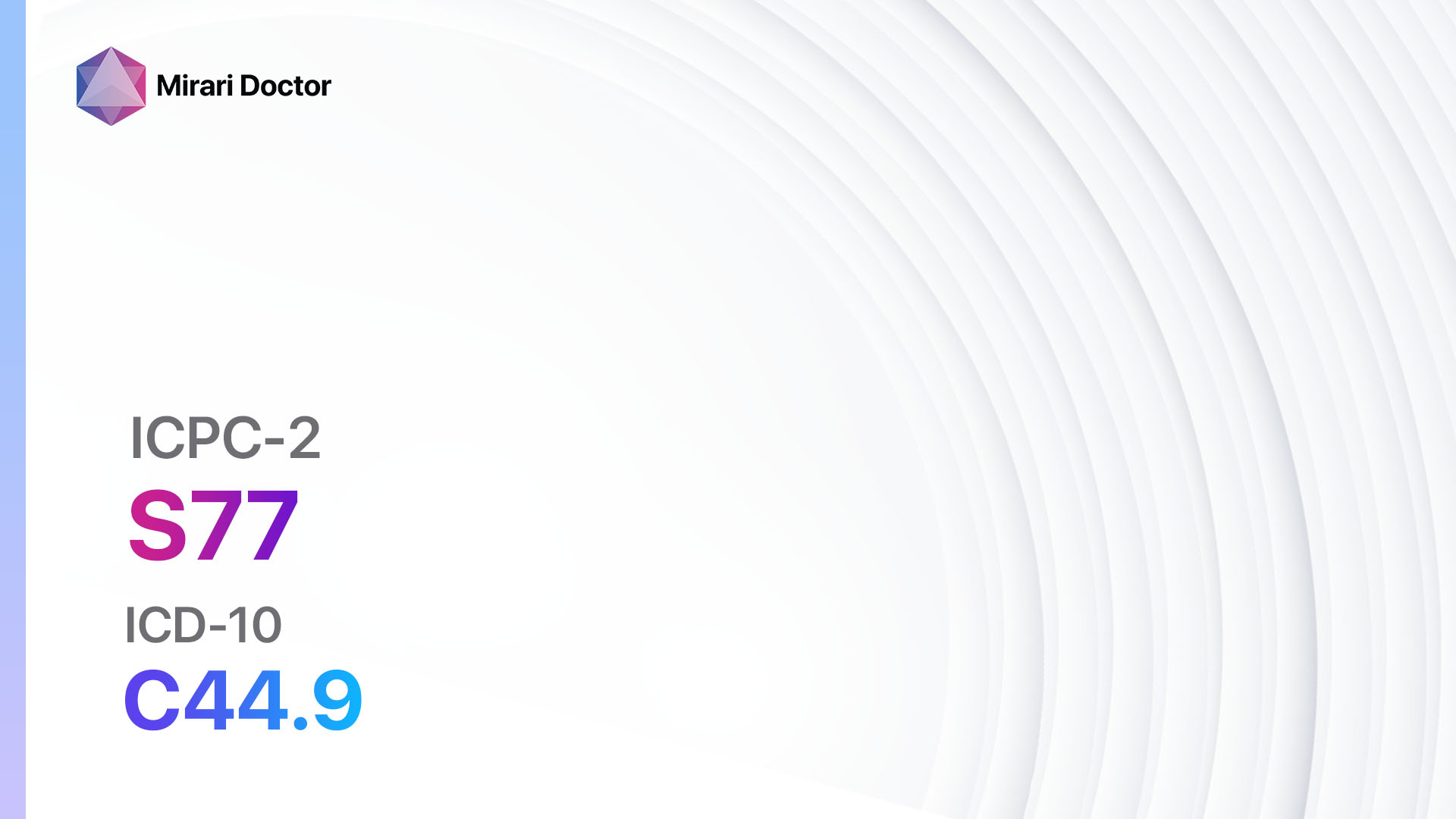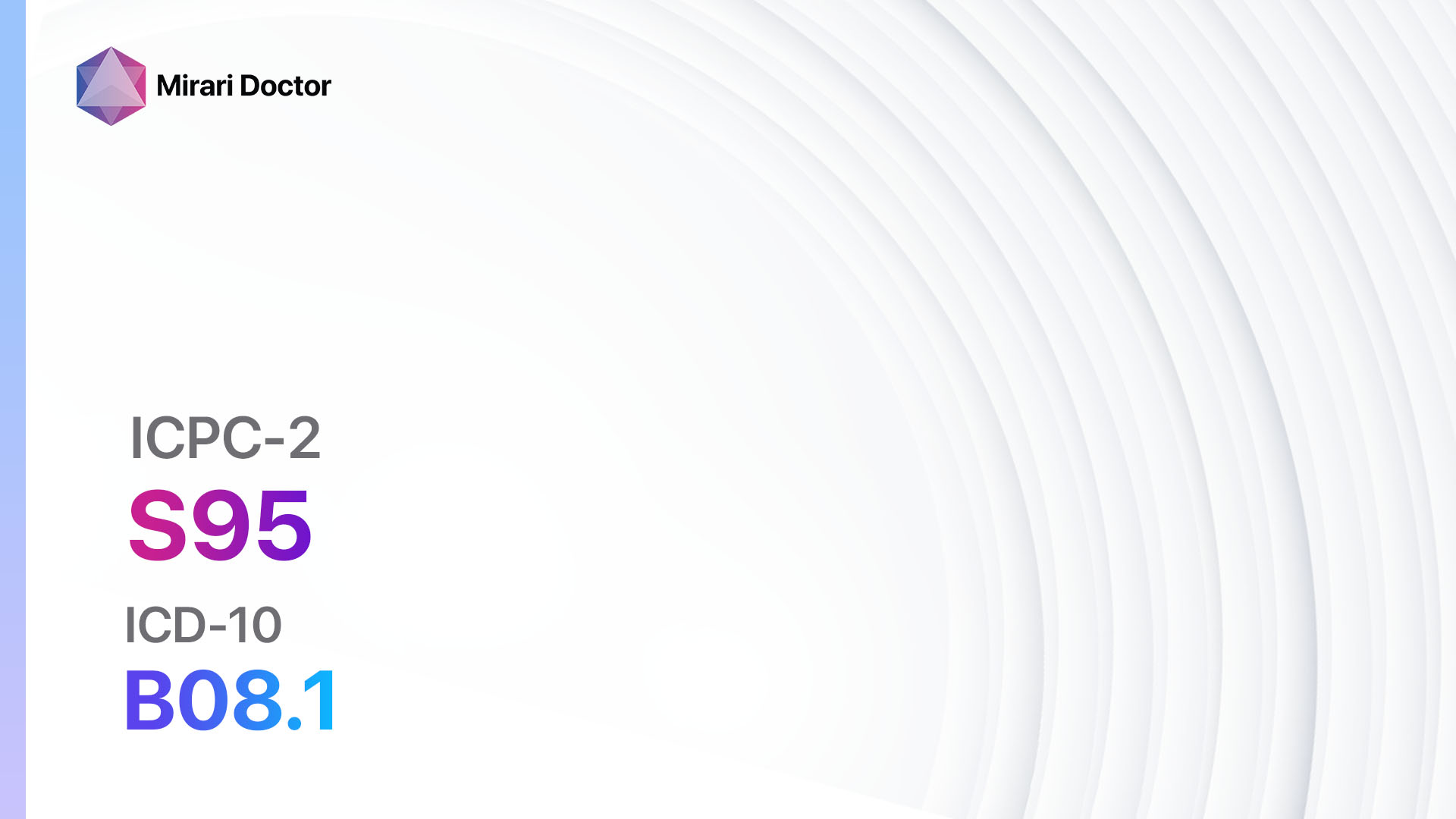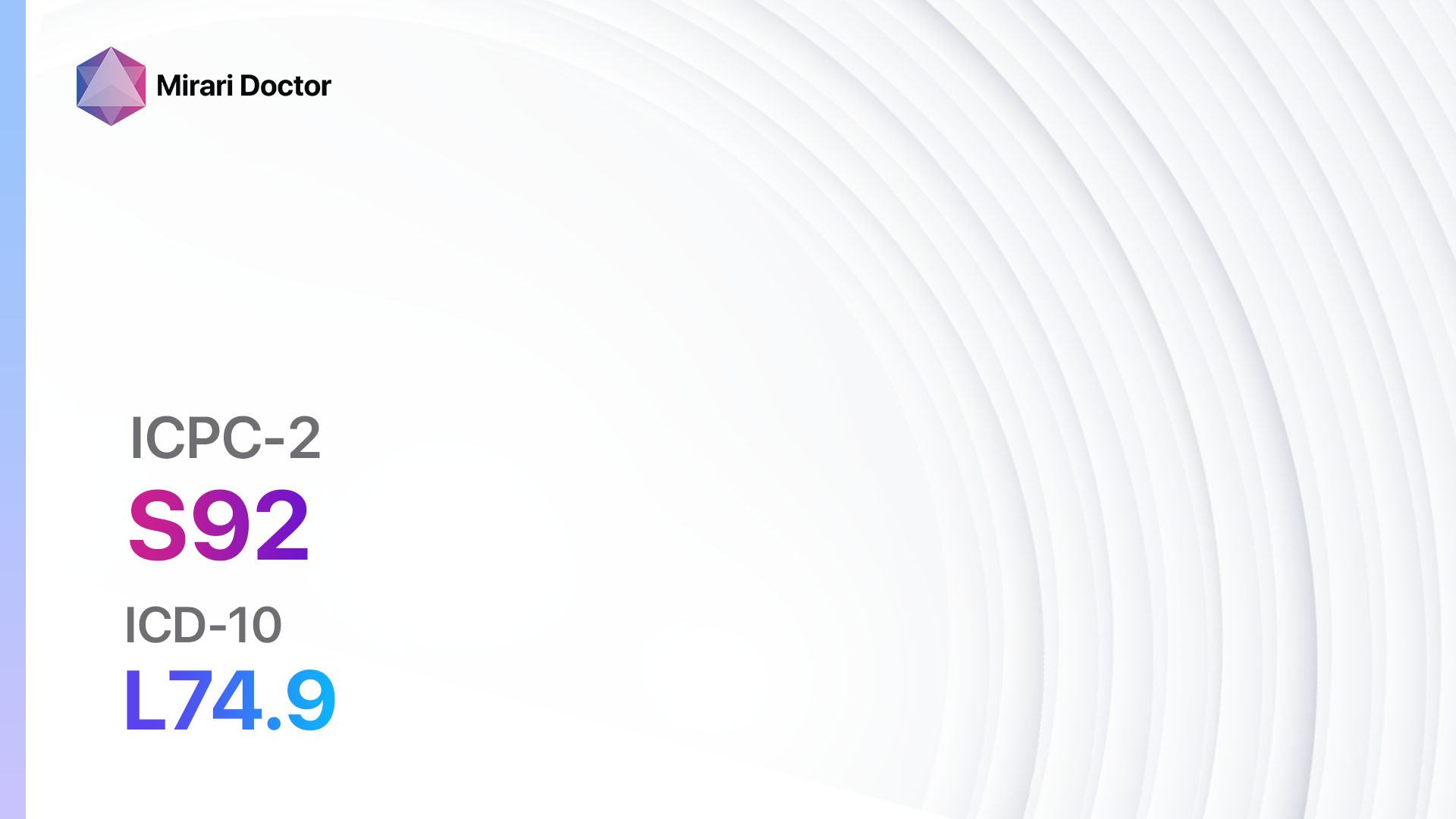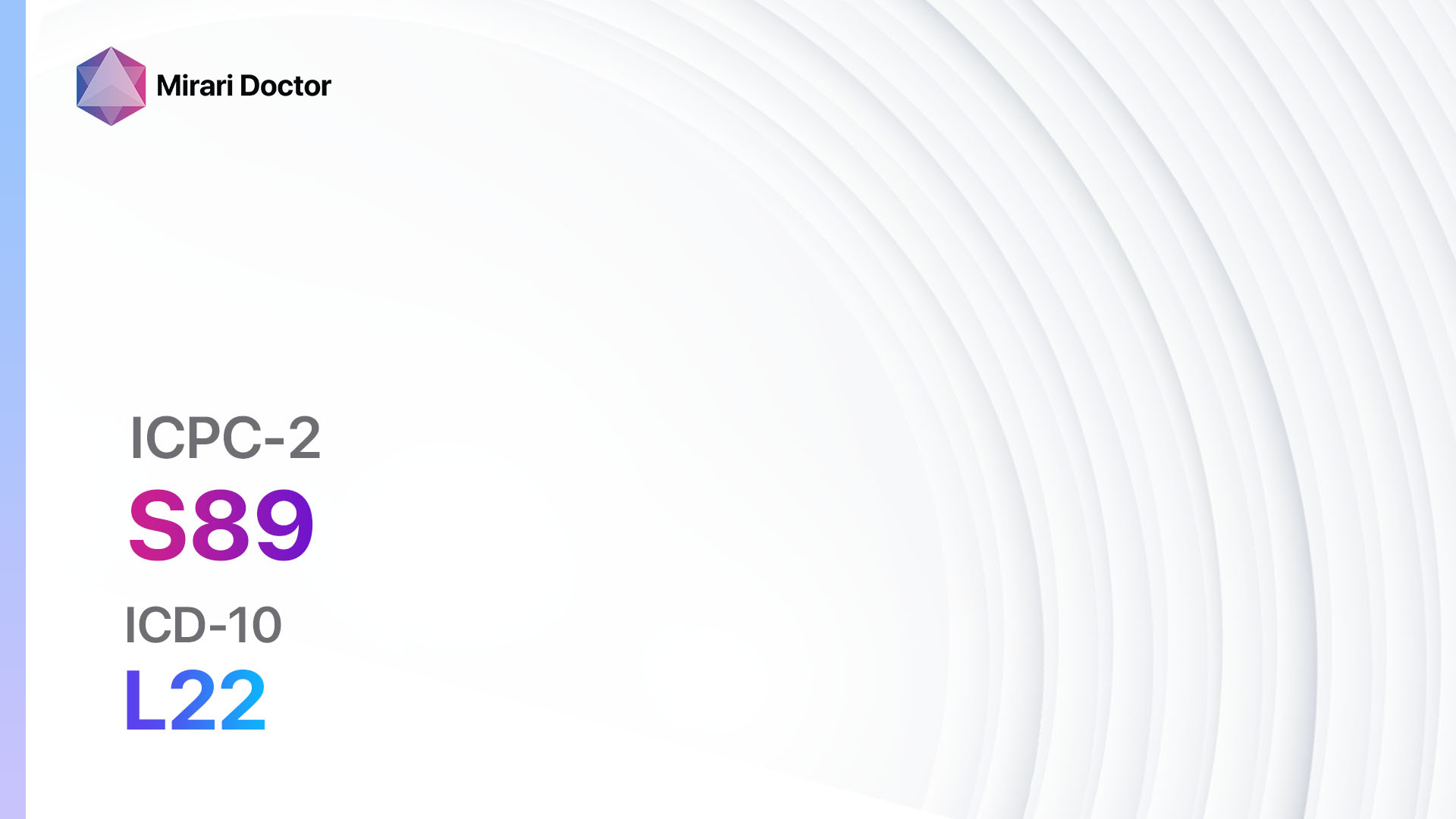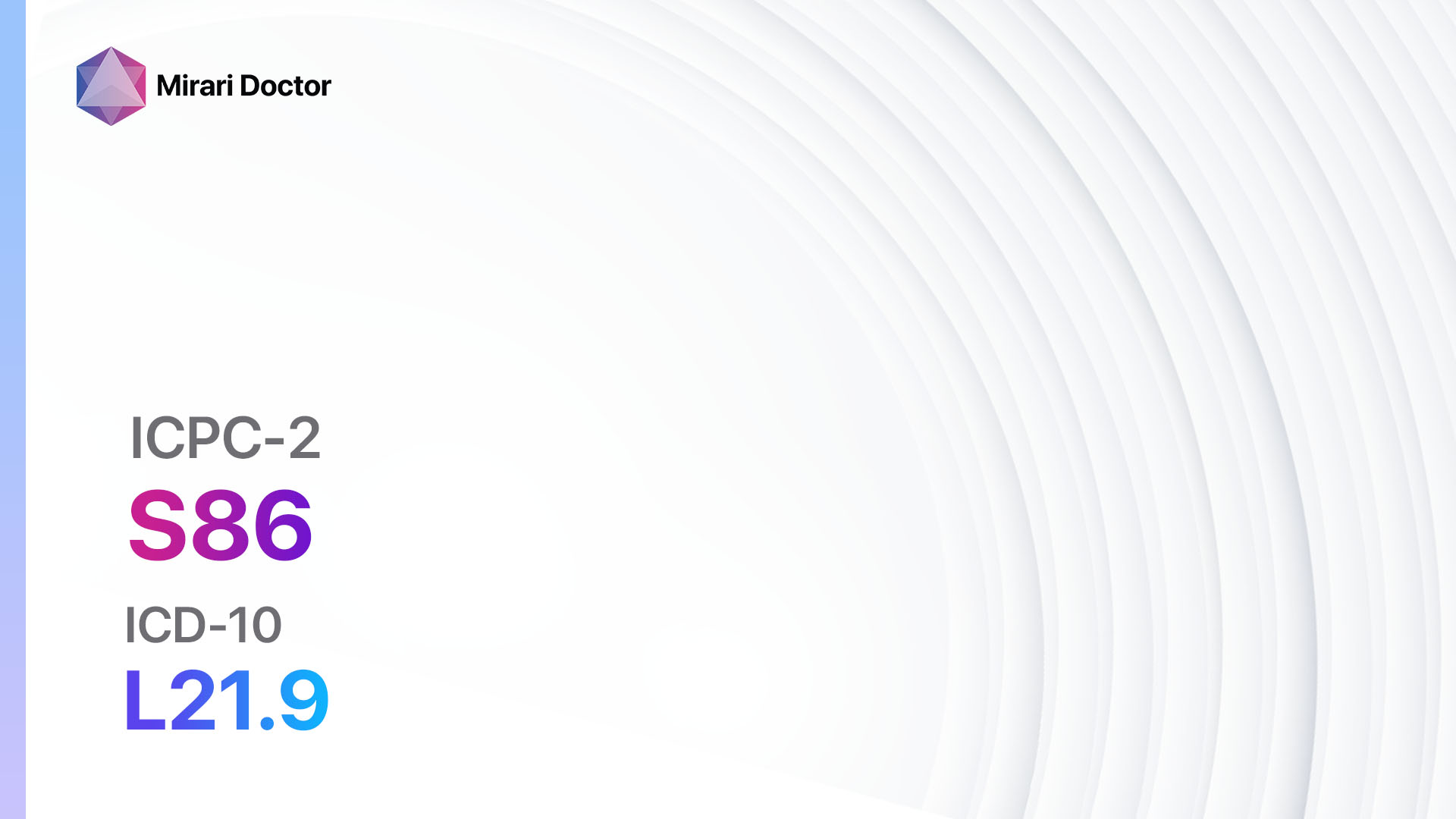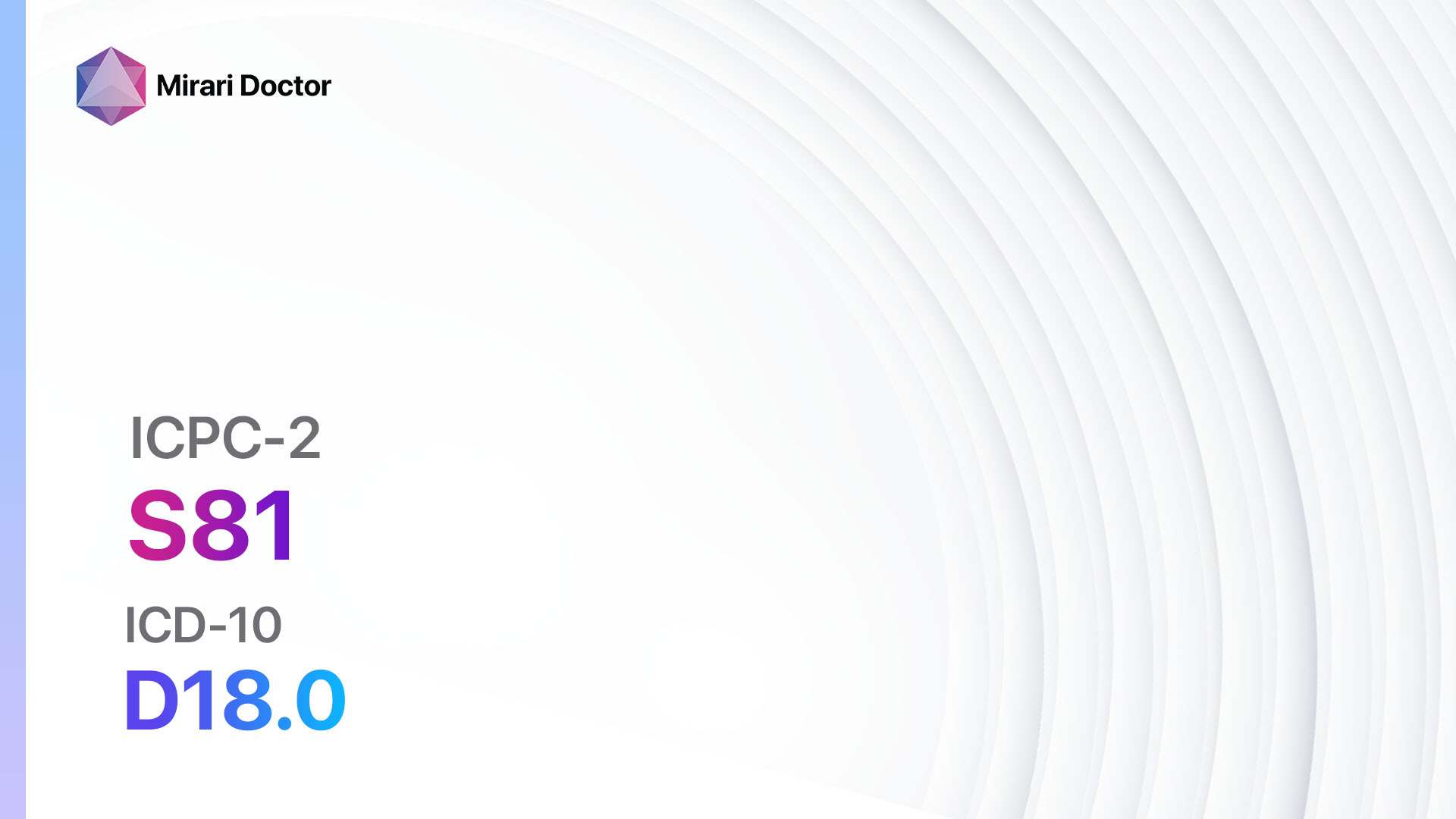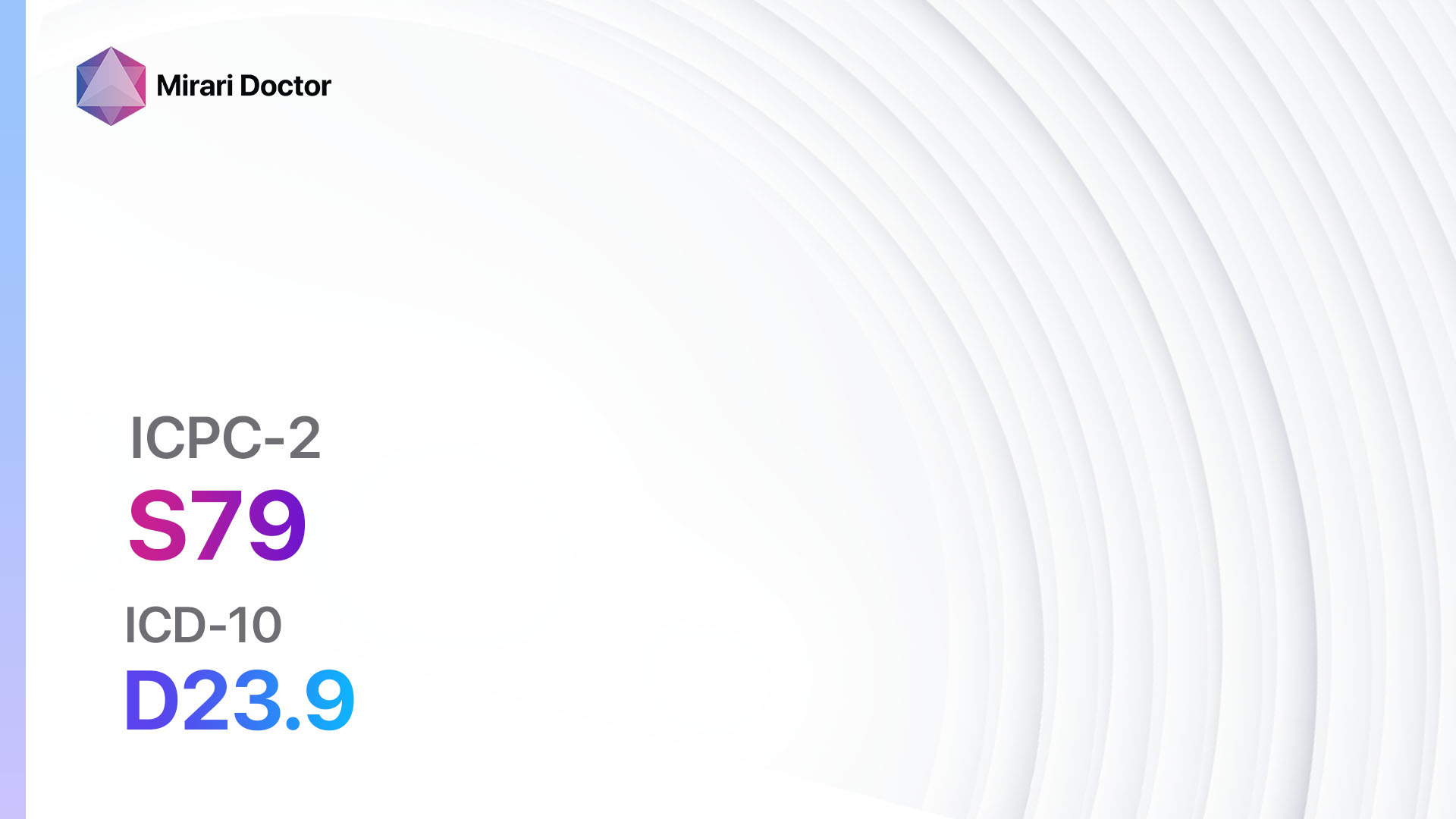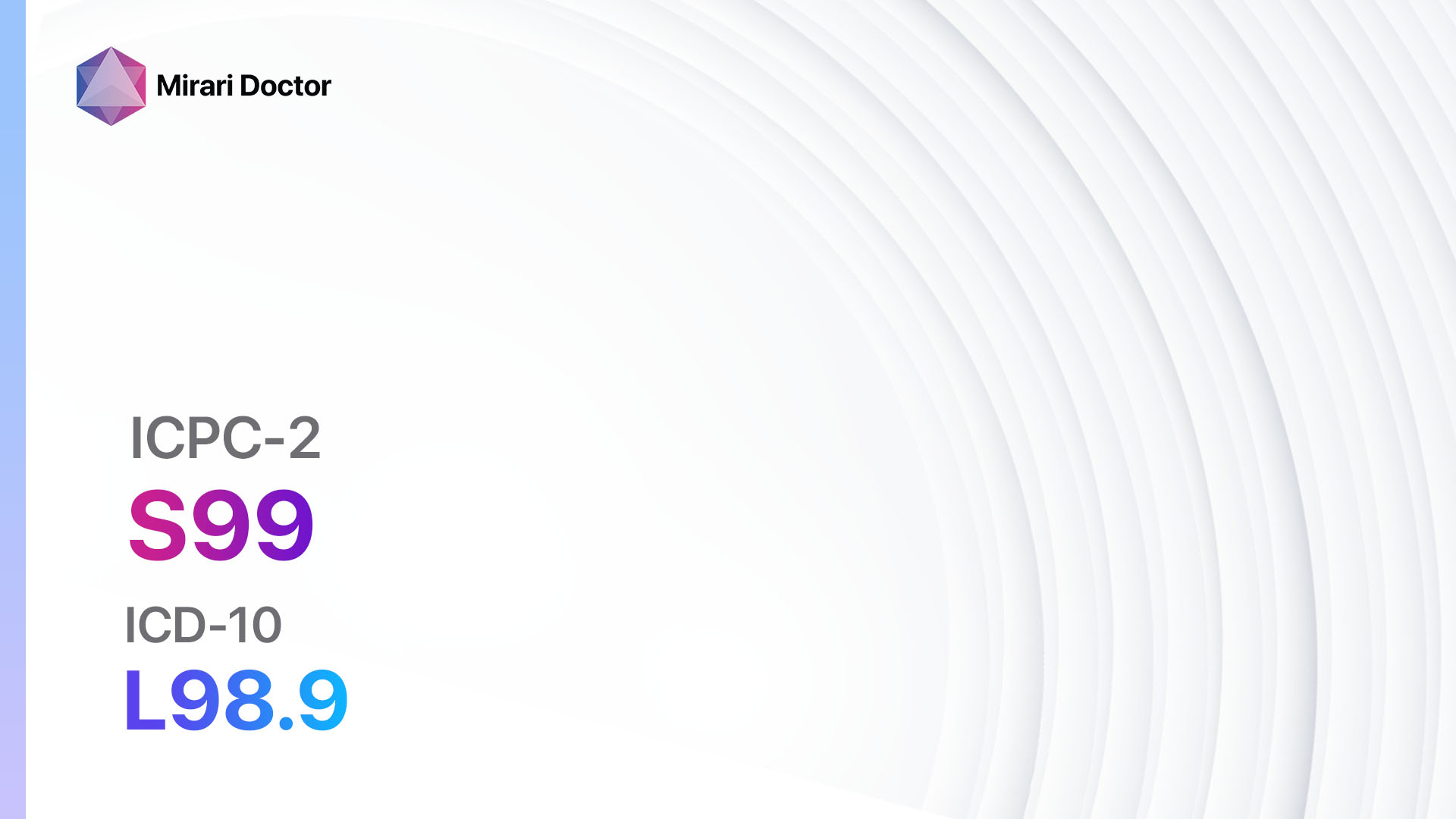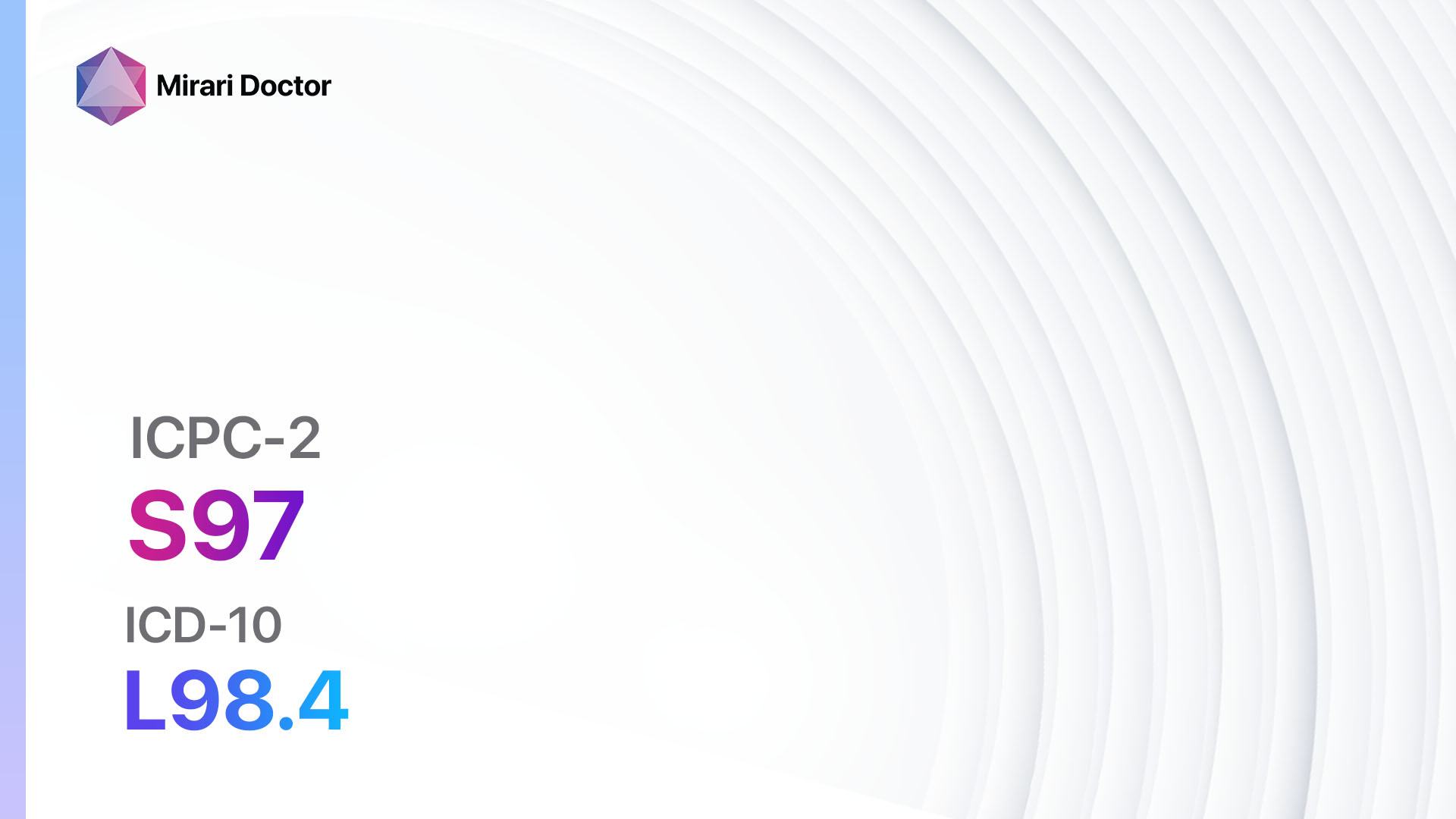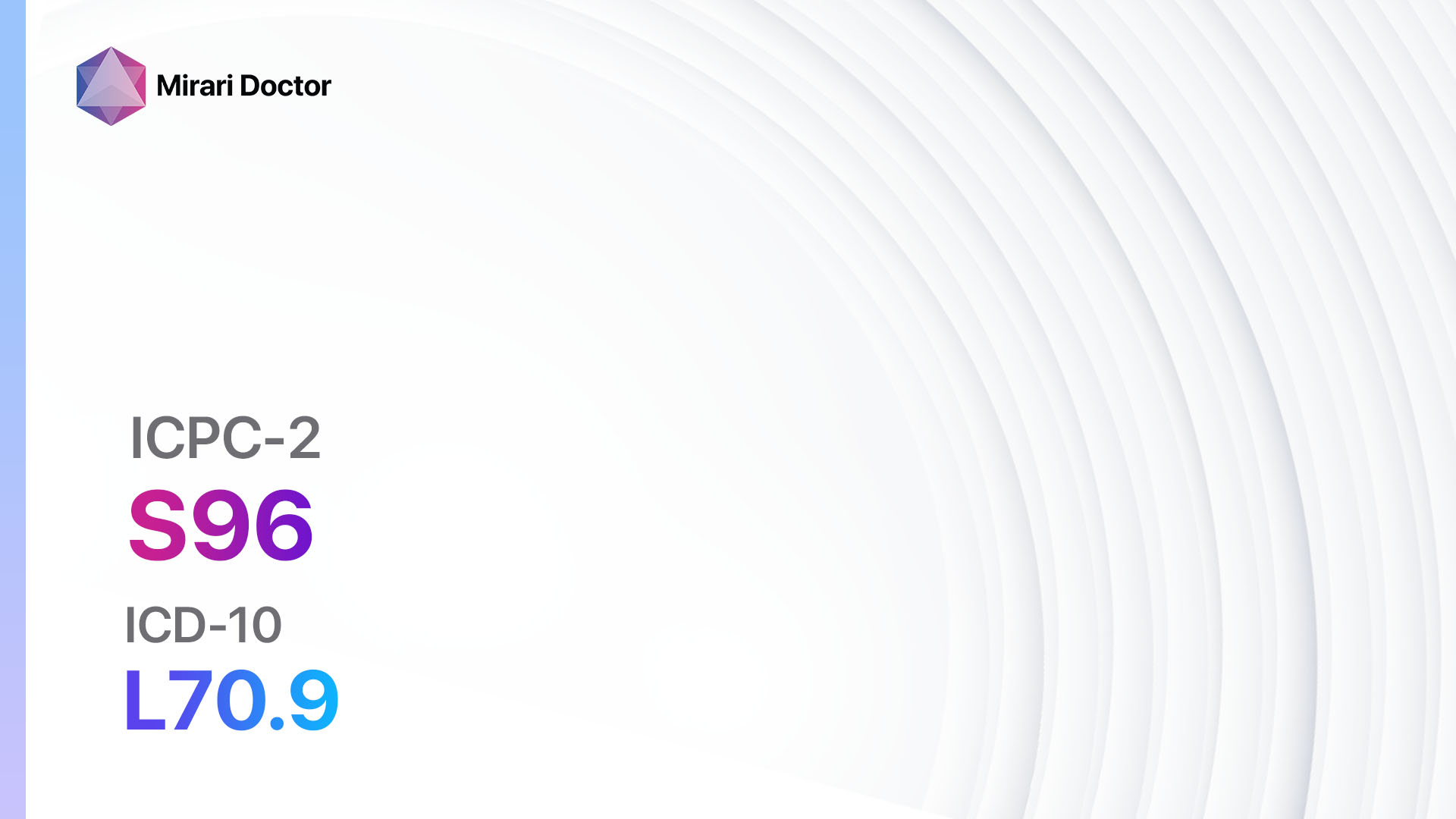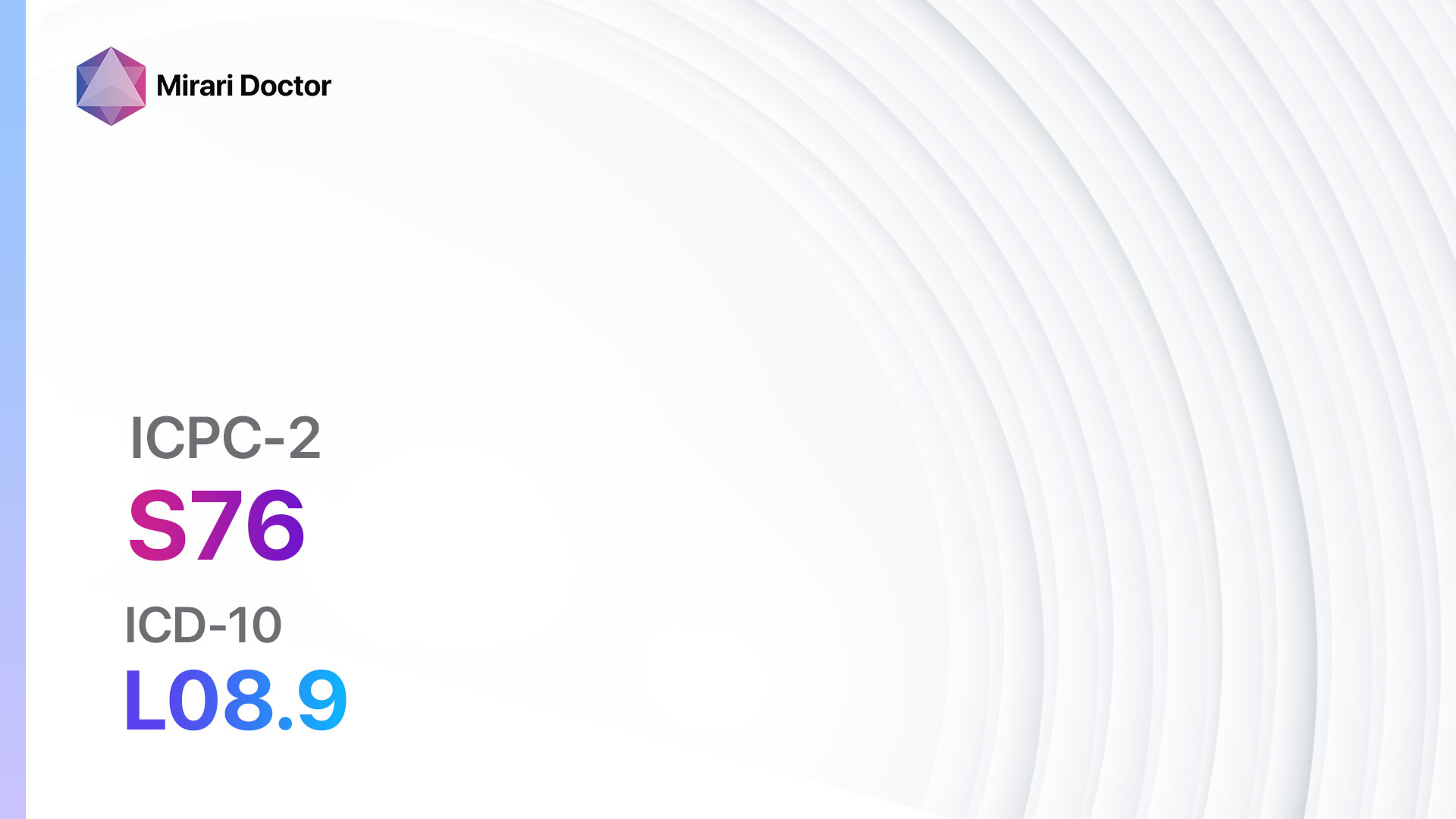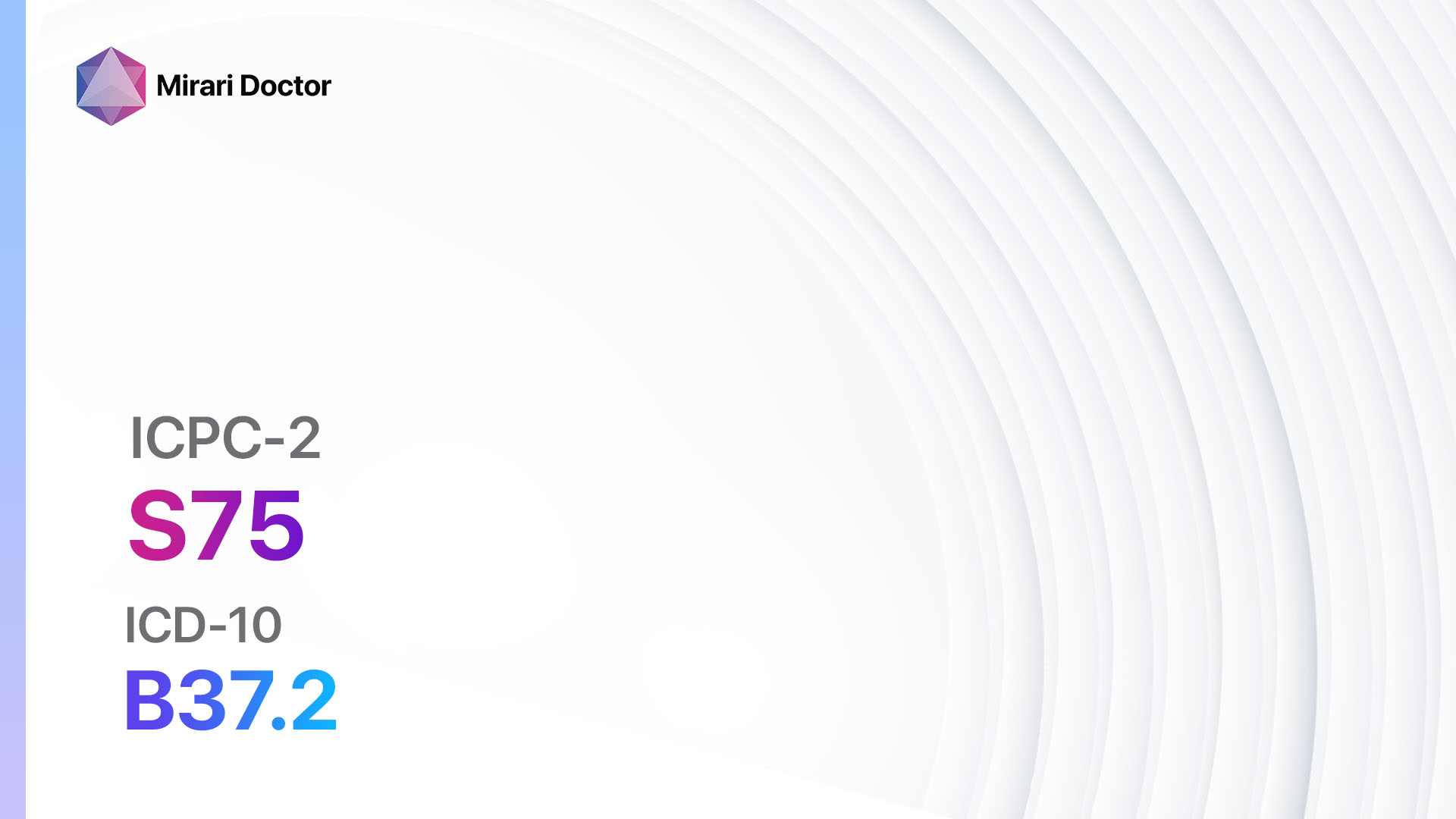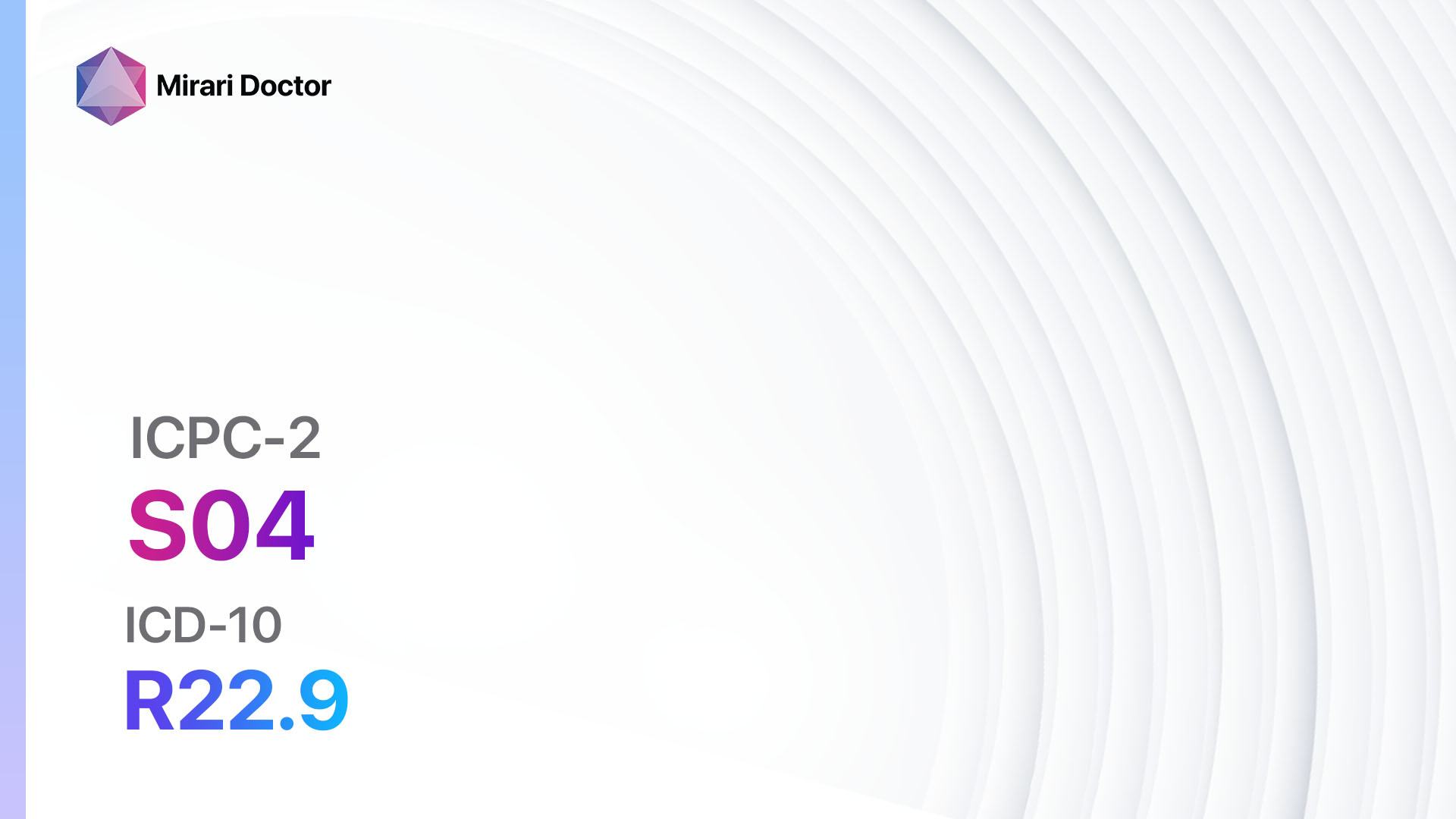
Introduction
Lump/swelling localized refers to the presence of a localized lump or swelling in a specific area of the body. This condition can be caused by various factors, including infections, trauma, inflammation, or underlying medical conditions.[1] The aim of this guide is to provide a step-by-step approach to diagnosing and managing patients presenting with a lump or swelling localized.
Codes
- ICPC-2 Code: S04 Lump/swelling localized
- ICD-10 Code: R22.9 Localized swelling, mass and lump, unspecified[2]
Symptoms
- Lump or swelling in a specific area of the body
- Pain or tenderness at the site of the lump or swelling
- Redness or warmth in the affected area
- Changes in skin texture or appearance over the lump or swelling[3]
Causes
- Infection: Bacterial, viral, or fungal infections can lead to the formation of a localized lump or swelling.
- Trauma: Injury or trauma to a specific area of the body can result in the development of a lump or swelling.
- Inflammation: Inflammatory conditions, such as arthritis or bursitis, can cause localized swelling.
- Cysts or tumors: Benign or malignant growths can lead to the formation of a lump or swelling.[4]
Diagnostic Steps
Medical History
- Gather information about the onset and duration of the lump or swelling.
- Inquire about any recent injuries or trauma to the affected area.
- Ask about any associated symptoms, such as pain, redness, or changes in skin texture.
- Assess the patient’s medical history for any underlying conditions that may contribute to the development of a lump or swelling.[5]
Physical Examination
- Inspect and palpate the lump or swelling to assess its size, shape, and consistency.
- Evaluate the surrounding skin for any signs of inflammation, redness, or warmth.
- Assess the range of motion and functionality of the affected area.
- Check for any regional lymphadenopathy or other associated findings.[6]
Determine Severity
- Classify the lump or swelling based on severity and depth, if applicable:
- Superficial lump or swelling: Located near the surface of the skin.
- Deep lump or swelling: Located deeper within the tissues or organs.[7]
Laboratory Tests
- Complete blood count (CBC): To assess for signs of infection or inflammation.
- C-reactive protein (CRP) and erythrocyte sedimentation rate (ESR): Indicators of inflammation.
- Blood cultures: If infection is suspected.
- Biopsy: If malignancy is suspected.[8]
Diagnostic Imaging
- X-ray: Useful for evaluating bony structures and ruling out fractures or other abnormalities.
- Ultrasound: Provides detailed images of soft tissues and can help differentiate between solid and cystic masses.
- CT scan or MRI: Provides more detailed imaging of the lump or swelling and surrounding structures.
- PET scan: Useful for evaluating the metabolic activity of a lump or swelling, particularly in cases of suspected malignancy.[9]
Other Tests
- Fine needle aspiration (FNA) or core needle biopsy: To obtain a sample of cells or tissue for further analysis.
- Genetic testing: If there is a suspicion of a genetic or hereditary condition.
- Immunohistochemistry: To determine the origin and characteristics of a lump or swelling.[10]
Follow-up and Patient Education
- Schedule follow-up appointments to monitor the progress of the lump or swelling.
- Provide education on self-examination techniques and when to seek medical attention.
- Discuss the importance of adherence to any prescribed treatments or medications.
Possible Interventions
Traditional Interventions
Medications:
Top 5 drugs for Lump/swelling localized:
- Nonsteroidal anti-inflammatory drugs (NSAIDs) (e.g., Ibuprofen, Naproxen):
- Cost: Generic versions can be $3-$20/month.
- Contraindications: Active peptic ulcer disease, history of gastrointestinal bleeding.
- Side effects: Upset stomach, heartburn, dizziness.
- Severe side effects: Gastrointestinal bleeding, kidney damage.
- Drug interactions: Anticoagulants, corticosteroids.
- Warning: Prolonged use can increase the risk of cardiovascular events.
- Antibiotics (e.g., Amoxicillin, Cephalexin):
- Cost: Generic versions can be $5-$50/month.
- Contraindications: Allergy to penicillin or cephalosporins.
- Side effects: Upset stomach, diarrhea, rash.
- Severe side effects: Severe allergic reactions, Clostridium difficile infection.
- Drug interactions: Warfarin, oral contraceptives.
- Warning: Complete the full course of antibiotics as prescribed.
- Corticosteroids (e.g., Prednisone, Dexamethasone):
- Cost: Generic versions can be $4-$50/month.
- Contraindications: Active infections, systemic fungal infections.
- Side effects: Increased appetite, weight gain, mood changes.
- Severe side effects: Increased risk of infections, osteoporosis.
- Drug interactions: Nonsteroidal anti-inflammatory drugs (NSAIDs), anticoagulants.
- Warning: Taper the dose gradually when discontinuing long-term use.
- Antihistamines (e.g., Diphenhydramine, Loratadine):
- Cost: Generic versions can be $3-$20/month.
- Contraindications: Narrow-angle glaucoma, urinary retention.
- Side effects: Drowsiness, dry mouth, blurred vision.
- Severe side effects: Severe allergic reactions, difficulty breathing.
- Drug interactions: Sedatives, alcohol.
- Warning: Avoid driving or operating machinery while taking sedating antihistamines.
- Diuretics (e.g., Furosemide, Hydrochlorothiazide):
- Cost: Generic versions can be $4-$30/month.
- Contraindications: Anuria, electrolyte imbalance.
- Side effects: Increased urination, electrolyte abnormalities.
- Severe side effects: Dehydration, kidney damage.
- Drug interactions: Nonsteroidal anti-inflammatory drugs (NSAIDs), lithium.
- Warning: Monitor electrolyte levels regularly.
Surgical Procedures:
- Incision and drainage: To remove pus or fluid from an abscess or cyst.
- Excisional biopsy: To remove the entire lump or swelling for further analysis.
- Tumor resection: Surgical removal of a tumor or mass.
- Lymph node dissection: Removal of lymph nodes for staging or treatment purposes.
- Plastic or reconstructive surgery: To repair or reconstruct tissues affected by the lump or swelling.
Alternative Interventions
- Acupuncture: May help reduce pain and inflammation associated with the lump or swelling. Cost: $60-$120 per session.
- Herbal remedies: Certain herbs, such as arnica or comfrey, may have anti-inflammatory properties. Cost: Varies depending on the specific herb or preparation.
- Cold or hot compresses: Applying cold or hot packs to the lump or swelling can help reduce pain and inflammation. Cost: Minimal.
- Massage therapy: Gentle massage techniques may help improve circulation and reduce swelling. Cost: $50-$100 per session.
- Homeopathic remedies: Some homeopathic remedies, such as Apis mellifica or Belladonna, may be used to alleviate symptoms associated with the lump or swelling. Cost: Varies depending on the specific remedy.
Lifestyle Interventions
- Rest and elevation: Keeping the affected area elevated and avoiding excessive physical activity can help reduce swelling.
- Cold or hot therapy: Applying cold or hot packs to the lump or swelling can help alleviate pain and inflammation.
- Compression: Using compression bandages or garments can help reduce swelling and improve circulation.
- Healthy diet: Consuming a balanced diet rich in fruits, vegetables, and lean proteins can support overall health and healing.
- Stress management: Engaging in stress-reducing activities, such as meditation or yoga, can help promote healing and reduce inflammation.
It is important to note that the cost ranges provided are approximate and may vary depending on the location and availability of the interventions.
Mirari Cold Plasma Alternative Intervention
Understanding Mirari Cold Plasma
- Safe and Non-Invasive Treatment: Mirari Cold Plasma is a safe and non-invasive treatment option for various skin conditions. It does not require incisions, minimizing the risk of scarring, bleeding, or tissue damage.
- Efficient Extraction of Foreign Bodies: Mirari Cold Plasma facilitates the removal of foreign bodies from the skin by degrading and dissociating organic matter, allowing easier access and extraction.
- Pain Reduction and Comfort: Mirari Cold Plasma has a local analgesic effect, providing pain relief during the treatment, making it more comfortable for the patient.
- Reduced Risk of Infection: Mirari Cold Plasma has antimicrobial properties, effectively killing bacteria and reducing the risk of infection.
- Accelerated Healing and Minimal Scarring: Mirari Cold Plasma stimulates wound healing and tissue regeneration, reducing healing time and minimizing the formation of scars.
Mirari Cold Plasma Prescription
Video instructions for using Mirari Cold Plasma Device – S04 Lump/swelling localized (ICD-10:R22.9)
| Mild | Moderate | Severe |
| Mode setting: 1 (Infection) Location: 0 (Localized) Morning: 15 minutes, Evening: 15 minutes |
Mode setting: 1 (Infection) Location: 0 (Localized) Morning: 30 minutes, Lunch: 30 minutes, Evening: 30 minutes |
Mode setting: 1 (Infection) Location: 0 (Localized) Morning: 30 minutes, Lunch: 30 minutes, Evening: 30 minutes |
| Mode setting: 2 (Wound Healing) Location: 0 (Localized) Morning: 15 minutes, Evening: 15 minutes |
Mode setting: 2 (Wound Healing) Location: 0 (Localized) Morning: 30 minutes, Lunch: 30 minutes, Evening: 30 minutes |
Mode setting: 2 (Wound Healing) Location: 0 (Localized) Morning: 30 minutes, Lunch: 30 minutes, Evening: 30 minutes |
| Mode setting: 7 (Immunotherapy) Location: 1 (Sacrum) Morning: 15 minutes, Evening: 15 minutes |
Mode setting: 7 (Immunotherapy) Location: 1 (Sacrum) Morning: 30 minutes, Lunch: 30 minutes, Evening: 30 minutes |
Mode setting: 7 (Immunotherapy) Location: 1 (Sacrum) Morning: 30 minutes, Lunch: 30 minutes, Evening: 30 minutes |
| Total Morning: 45 minutes approx. $7.50 USD, Evening: 45 minutes approx. $7.50 USD |
Total Morning: 90 minutes approx. $15 USD, Lunch: 90 minutes approx. $15 USD, Evening: 90 minutes approx. $15 USD |
Total Morning: 90 minutes approx. $15 USD, Lunch: 90 minutes approx. $15 USD, Evening: 90 minutes approx. $15 USD |
| Usual treatment for 7-60 days approx. $105 USD – $900 USD | Usual treatment for 6-8 weeks approx. $1,890 USD – $2,520 USD | Usual treatment for 3-6 months approx. $4,050 USD – $8,100 USD |
 |
|
Use the Mirari Cold Plasma device to treat Lump/swelling localized effectively.
WARNING: MIRARI COLD PLASMA IS DESIGNED FOR THE HUMAN BODY WITHOUT ANY ARTIFICIAL OR THIRD PARTY PRODUCTS. USE OF OTHER PRODUCTS IN COMBINATION WITH MIRARI COLD PLASMA MAY CAUSE UNPREDICTABLE EFFECTS, HARM OR INJURY. PLEASE CONSULT A MEDICAL PROFESSIONAL BEFORE COMBINING ANY OTHER PRODUCTS WITH USE OF MIRARI.
Step 1: Cleanse the Skin
- Start by cleaning the affected area of the skin with a gentle cleanser or mild soap and water. Gently pat the area dry with a clean towel.
Step 2: Prepare the Mirari Cold Plasma device
- Ensure that the Mirari Cold Plasma device is fully charged or has fresh batteries as per the manufacturer’s instructions. Make sure the device is clean and in good working condition.
- Switch on the Mirari device using the power button or by following the specific instructions provided with the device.
- Some Mirari devices may have adjustable settings for intensity or treatment duration. Follow the manufacturer’s instructions to select the appropriate settings based on your needs and the recommended guidelines.
Step 3: Apply the Device
- Place the Mirari device in direct contact with the affected area of the skin. Gently glide or hold the device over the skin surface, ensuring even coverage of the area experiencing.
- Slowly move the Mirari device in a circular motion or follow a specific pattern as indicated in the user manual. This helps ensure thorough treatment coverage.
Step 4: Monitor and Assess:
- Keep track of your progress and evaluate the effectiveness of the Mirari device in managing your Lump/swelling localized. If you have any concerns or notice any adverse reactions, consult with your health care professional.
Note
This guide is for informational purposes only and should not replace the advice of a medical professional. Always consult with your healthcare provider or a qualified medical professional for personal advice, diagnosis, or treatment. Do not solely rely on the information presented here for decisions about your health. Use of this information is at your own risk. The authors of this guide, nor any associated entities or platforms, are not responsible for any potential adverse effects or outcomes based on the content.
Mirari Cold Plasma System Disclaimer
- Purpose: The Mirari Cold Plasma System is a Class 2 medical device designed for use by trained healthcare professionals. It is registered for use in Thailand and Vietnam. It is not intended for use outside of these locations.
- Informational Use: The content and information provided with the device are for educational and informational purposes only. They are not a substitute for professional medical advice or care.
- Variable Outcomes: While the device is approved for specific uses, individual outcomes can differ. We do not assert or guarantee specific medical outcomes.
- Consultation: Prior to utilizing the device or making decisions based on its content, it is essential to consult with a Certified Mirari Tele-Therapist and your medical healthcare provider regarding specific protocols.
- Liability: By using this device, users are acknowledging and accepting all potential risks. Neither the manufacturer nor the distributor will be held accountable for any adverse reactions, injuries, or damages stemming from its use.
- Geographical Availability: This device has received approval for designated purposes by the Thai and Vietnam FDA. As of now, outside of Thailand and Vietnam, the Mirari Cold Plasma System is not available for purchase or use.
References
- Ockenfels HM. Therapeutic management of cutaneous and genital warts. J Dtsch Dermatol Ges. 2016;14(9):892-899.
- World Health Organization. International Statistical Classification of Diseases and Related Health Problems, 10th Revision (ICD-10). Geneva: WHO; 2019.
- Leach RM. Symptoms and signs of respiratory disease. Medicine. 2008;36(3):119-125.
- Bousquet J, Khaltaev N, Cruz AA, et al. Allergic Rhinitis and its Impact on Asthma (ARIA) 2008 update. Allergy. 2008;63 Suppl 86:8-160.
- Rivera MP, Mehta AC, Wahidi MM. Establishing the diagnosis of lung cancer: Diagnosis and management of lung cancer, 3rd ed: American College of Chest Physicians evidence-based clinical practice guidelines. Chest. 2013;143(5):e142S-e165S.
- Spiro SG, Gould MK, Colice GL. Initial evaluation of the patient with lung cancer: symptoms, signs, laboratory tests, and paraneoplastic syndromes: ACCP evidenced-based clinical practice guidelines. Chest. 2007;132(3):149S-160S.
- Metlay JP, Waterer GW, Long AC, et al. Diagnosis and Treatment of Adults with Community-acquired Pneumonia. An Official Clinical Practice Guideline of the American Thoracic Society and Infectious Diseases Society of America. American Journal of Respiratory and Critical Care Medicine. 2019;200(7):e45-e67.
- Nair VS, Sundaram V, Desai M, Gould MK. Accuracy of models to identify lung nodule cancer risk in the National Lung Screening Trial. American Journal of Respiratory and Critical Care Medicine. 2018;197(9):1220-1223.
- Lindeman NI, Cagle PT, Aisner DL, et al. Updated Molecular Testing Guideline for the Selection of Lung Cancer Patients for Treatment With Targeted Tyrosine Kinase Inhibitors: Guideline From the College of American Pathologists, the International Association for the Study of Lung Cancer, and the Association for Molecular Pathology. Journal of Molecular Diagnostics. 2018;20(2):129-159.
- Postmus PE, Kerr KM, Oudkerk M, et al. Early and locally advanced non-small-cell lung cancer (NSCLC): ESMO Clinical Practice Guidelines for diagnosis, treatment and follow-up. Annals of Oncology. 2017;28(suppl_4):iv1-iv21.
Related articles
Made in USA



